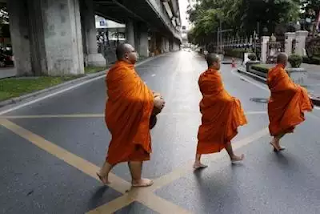Located in the Gaya district of Bihar and close to Rajgir, Jethian occupies a place of great prominence among the spots associated with the life of the Buddha. Known as Lathivana in Pali and Yasthivana in Sanskrit in ancient times, Jethian is the place where the Buddha met the ruler of Magadh, Bimbisara, after the former became enlightened at Bodh Gaya in the 6th century BC.
The Buddhist texts say that Gautama Buddha was heading towards Rajgir from Gayasisa (Brhmayoni) to share his experience with Bimbisara as promised by the former before his enlightenment. As soon as the Magadhan ruler got the news of Buddha’s coming, he along with his retinue of ministers and people of Rajgir left his capital to welcome Buddha at Jethian. Here Buddha delivered a sermon to Bimbisara on the non-existence of soul and the transience of worldly objects.
It was from Jethian that the Buddha and his followers were escorted by King Bimbisara through Jethian-Rajgir Valley to Rajgir, where the King offered them his favourite park and pleasure garden, Veluvana (Bamboo Grove) for their residence.
Today the serene Jethian – Rajgir valley is a Buddhist pilgrimage route around 13.5 km long. Many pilgrims, Buddhist monks and tourists from different parts of the world take up this route as a form of spiritual path which was taken by Buddha some 2500 years ago. During their stay at Jethian, the Buddha and his followers were offered alms by its residents. This legacy has also been revived in the form of sangha-dana before the spiritual walk taken by the pilgrims.
In the seventh century AD, the renowned Chinese traveller, Hieun Tsang spent almost two years at Jethian where he studied Buddhism under the guidance of eminent Buddhist monk Jayasena.
Other highlights of Jethian are the remains of a stupa, the statues of the Buddha and Avalokitsewara, also known as Padmapani. Jethian is a perfect base for the pilgrims willing to explore various sacred Buddhist places in its vicinity.
Jethian – Rajgir was identified by British archaeologist Alexander Cunningham in 1871.

Comments
Post a Comment